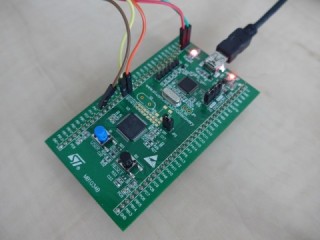Wednesday, October 11, 2017
Good morning crew! welcome back to war! So, we're talking about a big convoy of at least 15 "géninhos" heavly armed. 2 cars, 4 agents, 1 jipe, 3 agents, the truck, 4 agents, one car ,2 agents! So, best path is near Parque das Nações, and our best shot, is a sonic attack, to neutralize their movements.
Tuesday, October 10, 2017
Ok, everybody...the best plan until now, is have vault truck stopped on the endpoint receptor, and use a ton lifter hydraulic and then an also hydraulic spreader opening steel doors, forced entry
HYDRAULIC TON LIFTER
The Broco® CF-3 (Crow's Foot) Hydraulic Spreader assists in opening all types inward and outward opening doors and is ideal for distorting/destroying security gates and window bars. Machined from hardened billet steel, the CF-3 has unbelievable strength and maximum reliability making it tougher than forged alternatives. The unique 90 degree hose swivel enables it to be easily utilized in all positions.
https://www.broco-rankin.com/tactical/forced-entry/cf-3-/
Sunday, October 8, 2017
wow! let me try to say it!!! did u find out, that the ellipt curve is insert on a specific hardware, that means that, the 3 lines of the triangle inside the hexagon, inside the circle, reach each point on different frequencies...hum...therefore you need to build this :
In cryptography, Curve25519 is an elliptic curve offering 128 bits of security and designed for use with the elliptic curve Diffie–Hellman (ECDH) key agreement scheme. It is one of the fastest ECC curves and is not covered by any known patents.[1] The reference implementation is public domain software.[2]
The original Curve25519 paper defined it as a Diffie–Hellman (DH) function. Daniel J. Bernstein has since proposed that the name Curve25519 be used for the underlying curve, and the name X25519 for the DH function.[3]
LIKE THIS :
Curve25519 for ARM Cortex-M0
The software described below is a standalone Curve25519 implementation optimized for speed.
Build instructions
Installing llvm, clang, and st-link
To install llvm/clang and an ARM gcc cross-compiler on a Debian system, run the following commands (as root):
apt-get install llvm clang gcc-arm-none-eabi
Also, you will probably have to install libc6-dev-i386:
apt-get install libc6-dev-i386
To program the Cortex-M0 chip on the development board we need st-link. To download and build this tool, first install the libusb headers (as root):
apt-get install libusb-1.0-0-dev
run the following commands:
git clone https://github.com/texane/stlink.git
cd stlink
./autogen.sh
./configure
make && make install
cd stlink
./autogen.sh
./configure
make && make install
Connecting the STM32F0Discovery development board
For our tests and benchmark we use the STM32F0Discovery development board. To read serial output from this board you will need a USB-TTL converter, which needs to be connected as follows:
- 3.3V → 3.3V
- TXD → PA3
- RXD → PA2
- GND → GND
- 5V → DO NOT CONNECT
The setup should look like in the following picture:


Building Curve25519 for ARM Cortex-M0
To download and build the software for ARM Cortex-M0, run the following commands:
wget http://munacl.cryptojedi.org/data/curve25519-cortexm0-20150813.tar.bz2
tar xjvf curve25519-cortexm0-20150813.tar.bz2
cd curve25519-cortexm0-20150813
make
tar xjvf curve25519-cortexm0-20150813.tar.bz2
cd curve25519-cortexm0-20150813
make
Copyright warning: The software package contains a subdirectory named stm32f0xx which contains software copyrighted by ARM Ltd. The files in this subdirectory are thus not in the public domain.
Running tests and benchmarks
Each of the two versions of the software comes with 3 testing and benchmarking routines:
- test/test_stm32f0.sh
- test/speed_stm32f0.sh
- test/stack_stm32f0.sh
Each of those scripts will program the Cortex-M0 on the STM32F0Discovery board (see above) and print the output through USB-serial (also see above) to standard out. Note that test_stm32f0.sh does not print anything if the test is successful.
Ok, to answer you, if I have a brilliant idea, about an animation decrypter for the ellipt curve, in corel...just follow the white rabbit of this math law "If the successive sides of a cyclic hexagon are a, b, c, d, e, f, then the three main diagonals concur at a single point if and only if ace = bdf"
If you want a math quiz : A hexagon with consecutive sides of lengths 2, 2, 7, 7, 11, and 11 is inscribed in a circle. Find the radius of the circle.
http://www.qbyte.org/puzzles/p063s.html
Trigonometric Solution
We can drop a perpendicular from the center of the circle to each of the chords, bisecting the isosceles triangles, as shown.
We have a + b + c = /2, and c + d =
/2, and c + d =  /2.
/2.
Hence a + b = d < /2.
/2.
We have a + b + c =
Hence a + b = d <
We also have
Taking the cosine of both sides of a + b = d, and using trigonometric identities cos(x + y) = cosx cosy − sinx siny, and sin2x + cos2x = 1, we get
Adding 7/2r2 to both sides of the equation, squaring, and multiplying by 2r3, we obtain
2r3 − 87r − 77 = 0
This easily factorizes, giving (r − 7)(2r2 + 14r + 11) = 0.
The quadratic factor has negative real roots. Hence r = 7 is the only positive real root.
The quadratic factor has negative real roots. Hence r = 7 is the only positive real root.
Therefore the radius of the circumscribing circle of the original hexagon is 7 units.
Subscribe to:
Comments (Atom)
Marques Mendes eleições 2026 PR corruption ( angola part 1)
https://abreuadvogados.com/noticias/abreu/conferencia-da-abreu-advogados-e-da-fbl-advogados-em-angola-junta-250-participantes-de-varios-se...





















